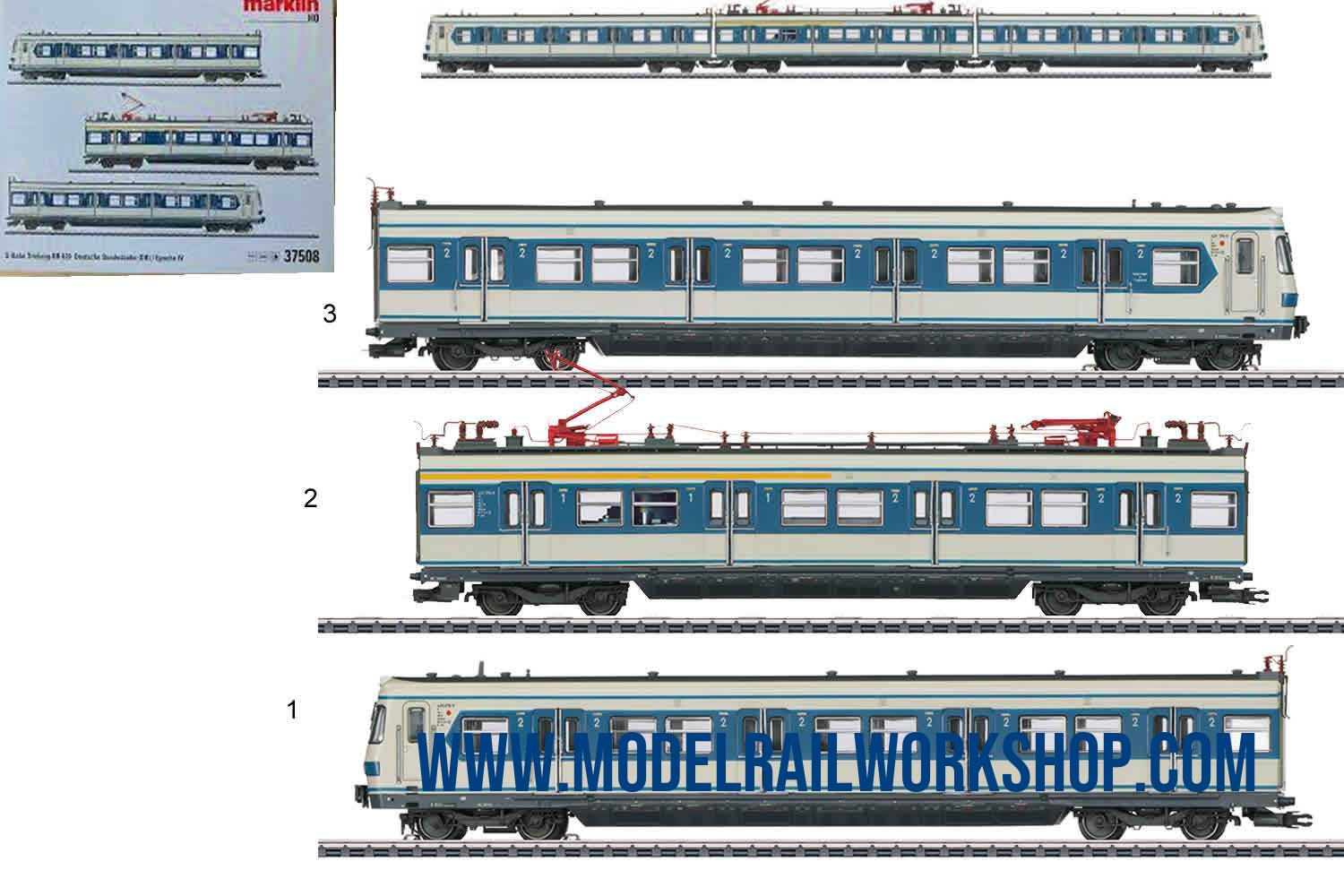
| KEY DATA | |
|---|---|
| Product Name | 37508 Electric S-Bahn Powered Rail Car Train - class 420 |
| Object type | Locomotive-Commuter train |
| Product Line | Märklin |
| Era | 1970-1990 (IV) |
| Manufactured years | 2019-2020 |
| Type of housing | Synthetic |
| Length | 77.5 cm |
| Technology | Digital MFX/DCC |
| Railway company | DE-DB |
| Märklin RRP (Year) | 430€ (2020) |
| Koll valuation (Year) | 380€ (2022) |
| Url to Märklin | Klick to GoTo www.maerklin.de |
| No | Obj.No | Obj.txt | Category | Description |
|---|---|---|---|---|
| - | 420 676-9 | - | Passenger car with loc | |
| - | 421 176-9 | - | Passenger car - bunit | |
| - | 420 176-0 | - | Passenger car with control space |
| Description | |
|---|---|